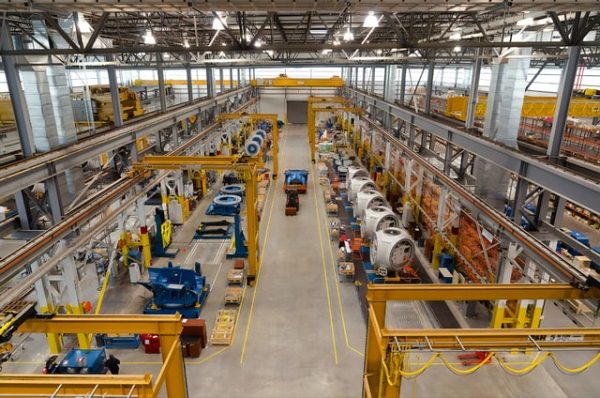- Strong global manufacturing production reported in March, but growth stymied by supply constraints
- Rising backlogs of work hint at further robust expansion in second quarter
- Robust upturns in some Asian countries helped sustain output growth in the region at one of the fastest rates in the past decade
- Asian exports rose at fastest rate since July 2014
- But inflation concerns are fanned by record rise in factory gate prices
Global manufacturing output growth accelerated in March at one of the fastest rates seen over the past decade despite near-record shortages of inputs, according to IHS Markit in a new analysis.
The JPMorgan Global Manufacturing PMI, compiled by IHS Markit, showed worldwide factory output growing for a ninth successive month in March and hitting the second highest peak since the start of 2018. The latest monthly expansion has only been exceeded three times since February 2011.
The upturn was led by a record surge in eurozone manufacturing production, accompanied by strong growth in the US and a notable rebound from near-stalled production in the UK.
In Asia, Japanese producers reported the sharpest gain for 27 months, while China’s output growth slowed to the weakest since last April. Nonetheless, further robust upturns in Taiwan, South Korea, Indonesia and Vietnam all helped sustain output growth in the rest of Asia at one of the fastest rates seen over the past decade.
The manufacturing upswing in part reflected rising global trade flows. Global exports rose at a rate not seen since January 2018.
The eurozone’s impressive record expansion was in particular driven by surging exports, which in the PMI data includes intra-eurozone exports among its members. Eurozone exporters reported the largest monthly increase in export orders since the survey data were first available in 1997.
US export growth moderated but remained among the sharpest since the global financial crisis, and China recorded the first rise in exports since December last year, though logistics issues, notably shortages of containers, reined in the growth potential.
Japan, meanwhile, recorded the first back-to-back monthly gains in exports for over two years, and elsewhere in Asia exports rose at the fastest rate since July 2014.
The further improvement occurred despite near-record shortages of inputs, which have led to the largest accumulation of backlogs of uncompleted orders since 2010. Average suppliers’ delivery times lengthened to an extent only exceeded once in more than two decades, occurring during the height of the pandemic in April 2020.
Supply constraints were attributed to demand exceeding supply for a wide variety of inputs, with shipping and logistics issues contributing to longer lead times.
Supply delays were most pronounced in Europe, as well as in the US and Taiwan, as demand for inputs soared across these economies alongside booming production demands.
The constraints arising from supply shortages meant overall global production growth lagged behind that of new orders.
These rising backlogs point to strong production growth through to the second quarter, assuming the supply situation improves. Delays from the Suez Canal blockage could add to these delays, however, resulting in a further short-term constraint on production, said IHS Markit.
Business expectations also continued to run at one of the highest levels seen over the past seven years, albeit down slightly on February, amid hopes of the vaccine rollout driving further sales growth in coming months.
More encouragingly, a brightening outlook has encouraged firms to boost capacity by adding to payroll numbers at the fastest rate for over two years.
IHS Markit said higher demand and constrained supply have triggered rising prices. March saw the largest increase in prices charged for manufactured goods recorded since data were first available over ten years ago.
With firms often seeking to pass these higher costs on to customers, average selling prices for goods leaving the factory gate were hiked to an extent not seen since 2009.
Photo by Science in HD on Unsplash









